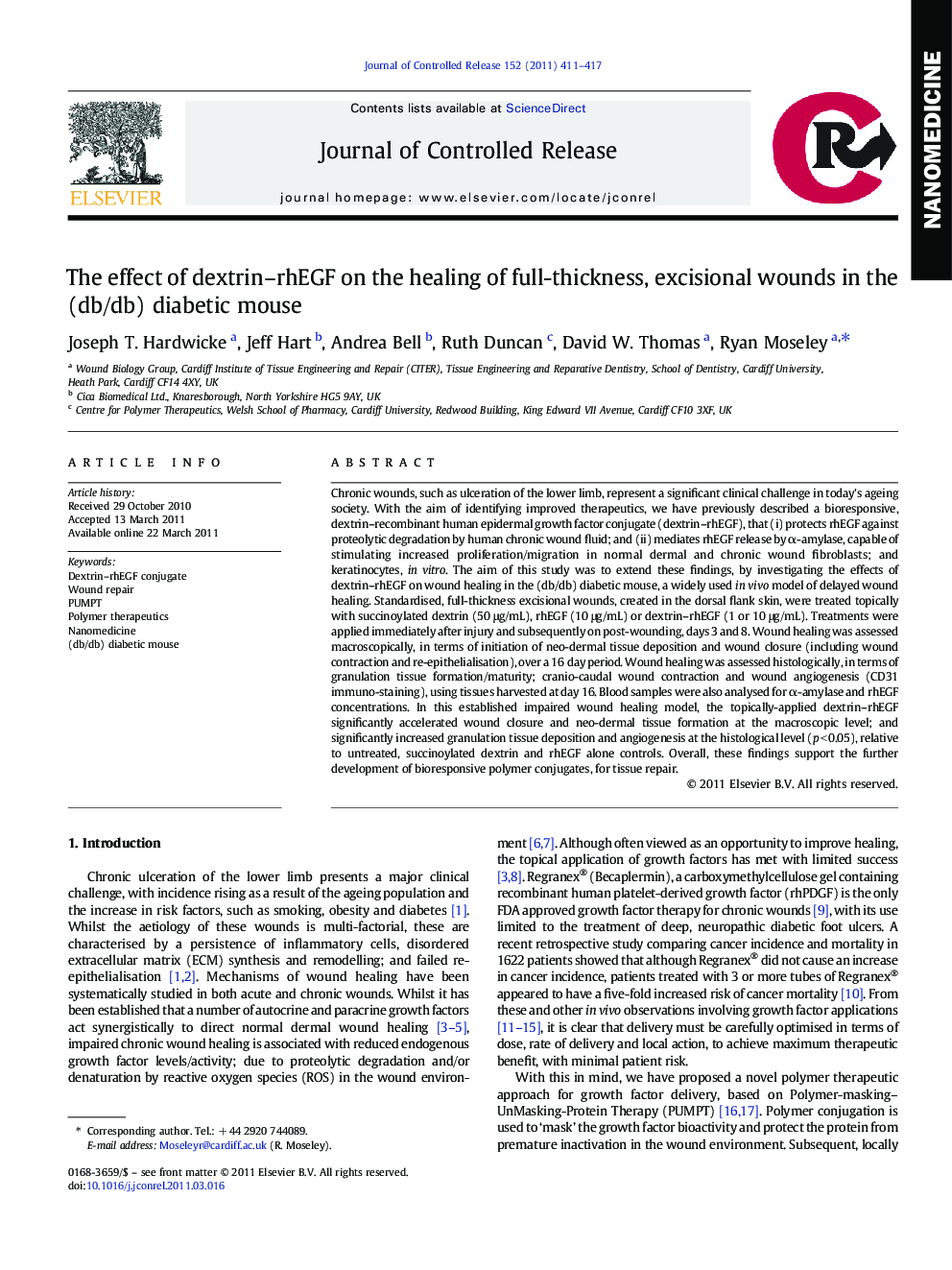| کد مقاله | کد نشریه | سال انتشار | مقاله انگلیسی | نسخه تمام متن |
|---|---|---|---|---|
| 1425064 | 986752 | 2011 | 7 صفحه PDF | دانلود رایگان |

Chronic wounds, such as ulceration of the lower limb, represent a significant clinical challenge in today's ageing society. With the aim of identifying improved therapeutics, we have previously described a bioresponsive, dextrin–recombinant human epidermal growth factor conjugate (dextrin–rhEGF), that (i) protects rhEGF against proteolytic degradation by human chronic wound fluid; and (ii) mediates rhEGF release by α-amylase, capable of stimulating increased proliferation/migration in normal dermal and chronic wound fibroblasts; and keratinocytes, in vitro. The aim of this study was to extend these findings, by investigating the effects of dextrin–rhEGF on wound healing in the (db/db) diabetic mouse, a widely used in vivo model of delayed wound healing. Standardised, full-thickness excisional wounds, created in the dorsal flank skin, were treated topically with succinoylated dextrin (50 μg/mL), rhEGF (10 μg/mL) or dextrin–rhEGF (1 or 10 μg/mL). Treatments were applied immediately after injury and subsequently on post-wounding, days 3 and 8. Wound healing was assessed macroscopically, in terms of initiation of neo-dermal tissue deposition and wound closure (including wound contraction and re-epithelialisation), over a 16 day period. Wound healing was assessed histologically, in terms of granulation tissue formation/maturity; cranio-caudal wound contraction and wound angiogenesis (CD31 immuno-staining), using tissues harvested at day 16. Blood samples were also analysed for α-amylase and rhEGF concentrations. In this established impaired wound healing model, the topically-applied dextrin–rhEGF significantly accelerated wound closure and neo-dermal tissue formation at the macroscopic level; and significantly increased granulation tissue deposition and angiogenesis at the histological level (p < 0.05), relative to untreated, succinoylated dextrin and rhEGF alone controls. Overall, these findings support the further development of bioresponsive polymer conjugates, for tissue repair.
Graphical AbstractFigure optionsDownload as PowerPoint slide
Journal: Journal of Controlled Release - Volume 152, Issue 3, 30 June 2011, Pages 411–417